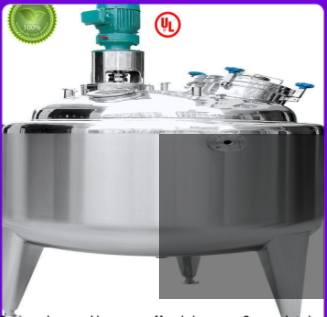Guangdong Jinzong Machinery Co., Ltd.
Contact Sales at JuJiao.
Sodium hypochlorite is one such chemical that needs to be dealt with care and stored properly in a vessel.It is known as bleach and hypochlorous acid, the ionic compound with unique properties finds application in disinfecting water and cleaning purposes, sodium hypochlorite needs to be protected from UV solar rays, oxidation, and off-gassing.
It is a challenge to store chemicals, acids, fuels, and gasoline in bulk quantities with safety for diverse manufacturing industries and plant operators.
It is hard to keep corrosive and hazardous chemicals and acids because when spilled or leaked they can cause catastrophic accidents in an industrial site or workplace.Therefore, high-quality sodium hypochlorite storage tanks are the need of the hour for industries handling and dealing with corrosive and toxic chemicals.
• Fiberglass reinforced plastic storages, polyethylene storage tanks, and chlorobutlyl rubber-lined steel storages are the best choices for it.
Even high-density polyethylene tanks are also popular choices among the manufacturers because they are robust, durable and have a specific gravity of 1.9 to offer resilience to corrosion.
It can last up to 15 years when properly designed, constructed, maintained, and installed. Polyethylene tanks are also viable options and they are as good as fiberglass tanks. They are known for their molecular weight and tensile strength.
Fiberglass tanks are the best storage options for sodium hypochlorite if you are looking for a long-term investment.
• Avoid steel storage tanks as they are incompatible with bleach. It is because they tend to degrade when the chemicals are stored in them.
• Sodium hypochlorite tanks that are reinforced with linings are a feasible option for storing sodium hypochlorite. The linings will protect the container from getting exposed to corrosive activities of the solution that can lead to contamination of iron and structural damage.
• Besides linings, it is also essential to opt for corrosion-resistant and semi-flexible piping, fitting, and gasket materials to shield the chemical contents from sunlight, ozone, weathering, and permeation.
• Tanks equipped with in-built secondary containment and catchment basin are especially useful. It will prevent the leakage of the hazardous chemical in bulk quantities.
It also acts as a backup when there is a tank failure. It is mandatory for the secondary containment to be chemically resistant and have the capacity to hold 110% of total system fluid capacity when the tank becomes loaded with contents.
• The best component materials for sodium hypochlorite storage tank comprise PVC/CPVC pipes and titanium encapsulated bolts. You can also consider PTFE, PVDF, FKM, and tantalum.
• The storage system should be vented to prevent the accumulation of oxygen off-gassing of NaOCl. The size of the venting should be twice of the inlet pipe diameter.
• While assessing the storage vessels, it is important to keep in mind the concentration strength of the chemical compound.

• Store the bleach in a diluted form to ensure its safety.
• Make sure you keep the bleach indoors. However, if you are forced to keep it outdoors, make sure you take all the necessary precautions to mitigate UV exposure and breakdown of the chemical. Precautions should include heat tracing, insulation, and mastic coatings.
• Store the bleach below 60 degrees Fahrenheit or 15-degree Centigrade. It is the ideal temperature to keep it with safety. If the storage temperature increases by 10%, then the chemical will start to decompose at a risk factor of 3.5.
• Keep the bleach separately from incompatible materials, reducing agents, organic materials, and others.
Being an aggressive oxidizing agent, sodium hypochlorite presents a major storage challenge, hence polyethylene tanks are the safest chemical storage solutions. It is because they are specifically designed for keeping them.
The features of polyethylene storages are compatible and go well with the chemical.The best thing about polyethylene storage tanks is that they will help you to overcome major challenges such as UV rays, off-gassing, and oxidation.
Made of XLPE thermostat resin, the modern polyethylene tanks reduce degradation of the chemical when exposed to the UV rays of the sun. The thermostat resin has other advantages too.
They are 20 times stronger to offer resistance to environmental stress, 10 times and 5 times stronger than standard units in terms of molecular weight and tensile strength respectively.
Copyright © 2025 Guangdong Jinzong Machinery Co., Ltd. | All Rights Reserved
We are here to help you! If you close the chatbox, you will automatically receive a response from us via email. Please be sure to leave your contact details so that we can better assist